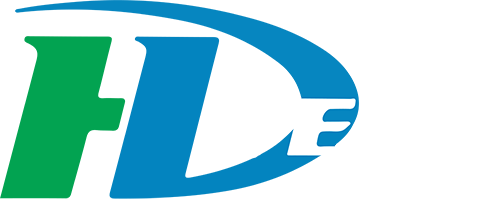Unlocking Security, Efficiency, and Cost Savings Through Modern Identity Management
In today’s dynamic business landscape, organizations are searching for ways to streamline IT operations, enhance security, and improve operational eficiency while adapting to technological change. Legacy identity platforms, especially on-premises Domain Controllers (DCs) running Active Directory, often result in duplicated efort, increased costs, and heightened risk. Migrating identity management from Active Directory to Entra (Microsoft’s cloud-based identity platform) emerges as a strategic solution, eliminating redundant infrastructure and empowering organizations to unlock measurable advantages.
What Is Identity Platform Migration and Why Does It Matter?
Migrating your identity platform is not merely a technical upgrade—it represents a purposeful realignment of your organization’s security architecture. By moving from on- premises DCs to Entra, you consolidate your directory services and authentication processes into a single, cloud-native system. This transition reduces reliance on legacy hardware, streamlines access management, and strengthens your security posture.
Adopting Entra allows organizations to retire their DCs, which traditionally manage user authentication, permissions, and access to resources. By consolidating identity management, you eliminate the need to operate, license, secure, and back up multiple directory services, reducing both risk and operational overhead. The result is a leaner, more secure, and more manageable environment—freeing resources for innovation and future growth.
The Power of Streamlined Identity Infrastructure and Operational Savings
At the heart of successful identity migration lies the drive to simplify authentication and maximize value from every component of your IT environment. Domain Controllers, while foundational in the era of on-premises IT, have become a significant source of redundancy and complexity in modern hybrid and cloud-first organizations.

Eliminating DCs streamlines authentication processes, reduces your attack surface, and lowers the risk of credential theft or privilege escalation. Organizations also experience significant fiscal benefits: less hardware to run and maintain, no need for dual licensing or backup regimes, and the removal of costly security monitoring for outdated servers frequently targeted by attackers.
The transition to Entra means users authenticate in a single, consistent way—no matter where their applications reside. This not only simplifies daily operations but also prepares your business for the future of cloud-based identity and access management.
Key Benefits: Tangible Results Delivered
- Enhanced Security and Availability: By eliminating DCs, you reduce the number of systems that can be exploited in a cyber-attack. Entra, as a cloud-native solution, is engineered for high availability and resilience: so, your business stays up, even if local systems are compromised.
- Cost Reduction: Migrating to Entra means saying goodbye to paying to run, back up, license, or secure redundant directory Operational complexity and infrastructure costs decrease dramatically.
- Simplified Management: With a single identity provider, permissions and access controls are easier to administer, synchronize, and audit—reducing the potential for administrative
- Increased Agility: Organizations can move faster, adopt new cloud applications, and support hybrid work with fewer Entra’s integration capabilities enable seamless access across on-premises, hybrid, and cloud environments.
- Direct User Impact: End users benefit from a streamlined experience—one set of credentials grants access to all necessary applications and resources, whether on- premises or in the cloud.
How It Works: A Closer Look at the Solution
Successfully migrating from Active Directory to Entra is a collaborative journey between technology experts and business stakeholders. The process begins by analyzing your current identity infrastructure, identifying the DCs in use, the services they provide, and the applications they support.

Once the transition plan is established, directory services are migrated to Entra, ensuring all users, permissions, and access keys are preserved. Synchronization is phased out, and users begin authenticating solely via Entra. This centralization ensures credentials are managed in one place, greatly reducing complexity.

For organizations with servers in Azure, Entra continues to serve as the identity provider, supporting seamless access to cloud resources. Migration is designed for minimal disruption to end users; authentication remains consistent, but now leverages a modern, secure platform.

Why This Approach Works
Embracing identity platform migration provides organizations with clarity, control, and resilience. By aligning your authentication architecture with current best practices, you enhance both fiscal responsibility and security. Eliminating legacy DCs closes common attack vectors exploited in breaches and enables your organization to respond more nimbly to changes in the IT environment.
For many situations, companies will need to have a Domain Controller (as some services, like Remote Desktop, rely on legacy Active Directory). In this situation, a small server will be used to receive a one-way sync from Entra that will contain a copy of the directory that legacy services can authenticate from. So, while there is a cost of running this server, similar to a traditional Domain Controller, the main diference is this server receives a copy of the directory and does not host it, making it resilient to traditional Domain Controller risks as it can simply just be replaced at any time as it is only holding a copy of the directory.

Ongoing optimization and monitoring ensure that your identity solution remains robust and cost-efective, future-proofing your organization’s core security framework.
Embracing Proactive Optimization
In a world where flexibility, operational excellence, and cyber resilience are essential, migrating to Entra stands out as a pivotal step for organizations seeking to modernize their identity management. By retiring Domain Controllers and centralizing authentication, you unlock immediate and long-term benefits: lower expenses, reduced risk, and increased business agility.
This proactive strategy not only bolsters your technology foundation but also empowers your organization to redirect resources toward innovation and growth—ensuring you stay secure, agile, and competitive in the digital age.
get in touchWe are always ready to help you and answer your questions
Call Center
Our Location
H&D Technologies, LLC
322 Main Street, Suite 4
Seal Beach, CA 90740


